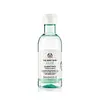What's inside
What's inside
 Benefits
Benefits

 Concerns
Concerns

No concerns
 Ingredients Side-by-side
Ingredients Side-by-side

Water
Skin ConditioningGlycerin
HumectantPolysorbate 20
EmulsifyingMethyl Gluceth-20
HumectantPhenoxyethanol
PreservativeDisodium EDTA
Chlorphenesin
AntimicrobialSaponins
CleansingParfum
MaskingSodium Dehydroacetate
PreservativeTromethamine
BufferingBenzyl Benzoate
AntimicrobialLinalool
PerfumingHexyl Cinnamal
PerfumingHydroxycitronellal
PerfumingButylphenyl Methylpropional
PerfumingSaponaria Officinalis Leaf/Root Extract
Skin ConditioningPrunus Armeniaca Fruit Extract
Skin ConditioningWater, Glycerin, Polysorbate 20, Methyl Gluceth-20, Phenoxyethanol, Disodium EDTA, Chlorphenesin, Saponins, Parfum, Sodium Dehydroacetate, Tromethamine, Benzyl Benzoate, Linalool, Hexyl Cinnamal, Hydroxycitronellal, Butylphenyl Methylpropional, Saponaria Officinalis Leaf/Root Extract, Prunus Armeniaca Fruit Extract
 Reviews
Reviews

Ingredients Explained
These ingredients are found in both products.
Ingredients higher up in an ingredient list are typically present in a larger amount.
Glycerin is already naturally found in your skin. It helps moisturize and protect your skin.
A study from 2016 found glycerin to be more effective as a humectant than AHAs and hyaluronic acid.
As a humectant, it helps the skin stay hydrated by pulling moisture to your skin. The low molecular weight of glycerin allows it to pull moisture into the deeper layers of your skin.
Hydrated skin improves your skin barrier; Your skin barrier helps protect against irritants and bacteria.
Glycerin has also been found to have antimicrobial and antiviral properties. Due to these properties, glycerin is often used in wound and burn treatments.
In cosmetics, glycerin is usually derived from plants such as soybean or palm. However, it can also be sourced from animals, such as tallow or animal fat.
This ingredient is organic, colorless, odorless, and non-toxic.
Glycerin is the name for this ingredient in American English. British English uses Glycerol/Glycerine.
Learn more about GlycerinPolysorbate 20 is made by combining ethoxylation of sorbitan, ethylene oxide, and lauric acid. It is a mild cleansing agent, surfactant, and emulsifier.
As a surfactant, it helps collect dirt and oils for washing. Emulsifiers prevent oils and water from separating.
Polysorbate 20 also adds scent to a product. Since it is made using sorbitol, it has a sweet scent. Sorbitol can also be found in fruits such as apples and peaches.
The lauric acid used to create Polysorbate 20 is often derived from coconuts.
Polysorbate 20 may not be fungal acne safe.
Learn more about Polysorbate 20Water. It's the most common cosmetic ingredient of all. You'll usually see it at the top of ingredient lists, meaning that it makes up the largest part of the product.
So why is it so popular? Water most often acts as a solvent - this means that it helps dissolve other ingredients into the formulation.
You'll also recognize water as that liquid we all need to stay alive. If you see this, drink a glass of water. Stay hydrated!
Learn more about Water